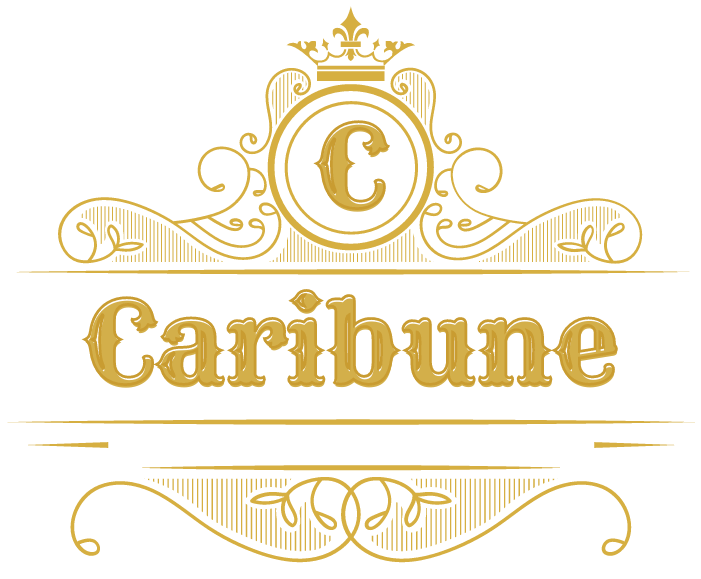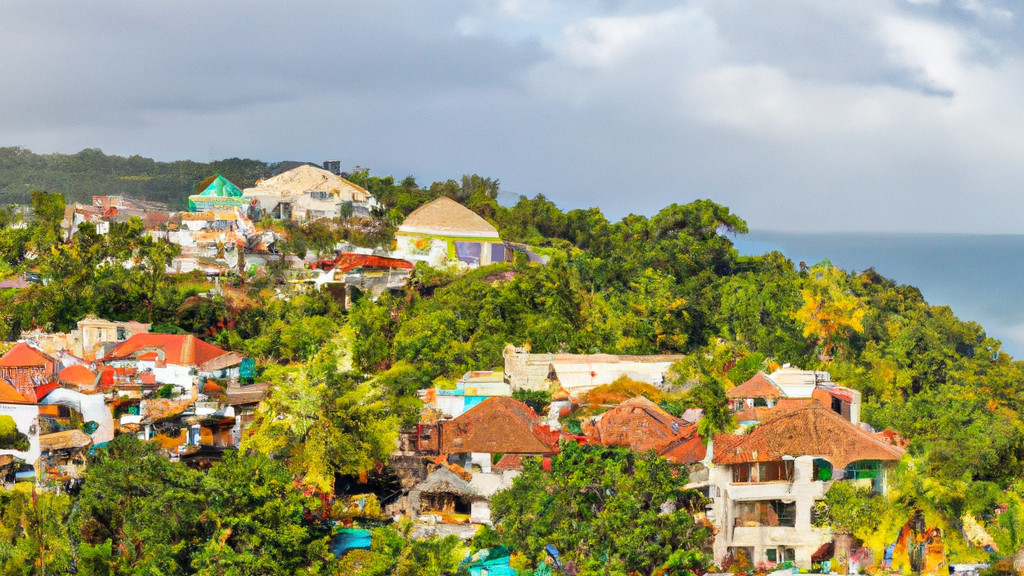Grenada, often referred to as the “Spice Isle,” is not only famous for its breathtaking beaches and lush rainforests but also for its rich history and cultural heritage.
The island has been shaped by centuries of European colonization, African influences, and a legacy of resilience and independence. Throughout Grenada, you’ll find a variety of historical landmarks, including colonial forts, plantations, and cultural sites that tell the story of the island’s past.
In this guide, we’ll explore the top historical landmarks and forts you must visit in Grenada, offering a deeper insight into the island’s fascinating history.
1. Fort George
A Strategic Fort with Panoramic Views
Fort George, located on a hill overlooking the capital city of St. George’s, is Grenada’s most famous fort and a must-see historical site. Built by the French in 1705 and originally named Fort Royal, this imposing fortress played a key role in protecting Grenada from naval attacks during the colonial era. It was later taken over by the British in 1762 and renamed Fort George in honor of King George III.
Visitors can explore the old stone barracks, artillery, and bastions, while learning about the fort’s significance in Grenada’s history. Fort George is also infamous for its role in the events of 1983, when Grenada’s Prime Minister Maurice Bishop was executed during a political coup. The fort provides spectacular views of St. George’s harbor, the Carenage, and the surrounding coastline.
Highlights:
- Panoramic views of St. George’s and the harbor
- Historical significance, including its role in the 1983 coup
- Explore old cannons, barracks, and fortifications
Location: St. George’s
Best Time to Visit: Early morning or late afternoon to enjoy cooler temperatures and fewer crowds.
2. Fort Frederick
The “Backward Facing” Fort
Fort Frederick, located on Richmond Hill, is known as the “backward-facing fort” because its cannons point inland rather than toward the sea. This unusual design was a defensive measure taken after the French built the fort in 1779 to protect against internal uprisings. The British later took control of the fort and completed its construction.
Today, Fort Frederick is one of the best-preserved forts in Grenada, and its hilltop location offers breathtaking panoramic views of the surrounding areas, including Fort George, St. George’s, and the Caribbean Sea. The fort’s relatively peaceful atmosphere makes it an ideal spot for photography and history lovers looking to explore Grenada’s colonial past.
Highlights:
- Spectacular views of St. George’s, Fort George, and the sea
- Learn about the fort’s unique defensive design
- Great for photography and sunset views
Location: Richmond Hill, St. George’s
Best Time to Visit: Late afternoon for stunning sunset views.
3. Fort Matthew
Grenada’s Largest Fort with a Dark History
Fort Matthew is the largest of Grenada’s colonial forts and is located on Richmond Hill, near Fort Frederick. This 18th-century fort offers an intriguing mix of history and scenic views, but it’s also known for its darker past. After serving as a military fort during the French and British colonial periods, Fort Matthew was later used as a mental asylum in the 19th and 20th centuries.
Today, the fort’s tunnels, dungeons, and stone walls are open for exploration, offering a glimpse into its fascinating and sometimes eerie past. Visitors can also enjoy panoramic views of the island, similar to those from Fort Frederick.
Highlights:
- Explore tunnels, dungeons, and military ruins
- Fascinating history as both a fort and a mental asylum
- Stunning views of St. George’s and the coastline
Location: Richmond Hill, St. George’s
Best Time to Visit: Morning or late afternoon to avoid the heat.
4. The Carenage
A Historic Harbor in the Heart of St. George’s
The Carenage is the historic waterfront area of St. George’s, where the harbor has been a center of activity since the colonial era. Named after the French word “caréner,” which means to careen or clean the hull of a ship, the Carenage is lined with charming colonial buildings, warehouses, and fishing boats. This area has played a key role in Grenada’s maritime history, serving as a vital port for the export of spices like nutmeg and cocoa.
Visitors can stroll along the waterfront, enjoy the view of colorful boats and buildings, and explore nearby landmarks like the Grenada National Museum and the Sendall Tunnel, which connects the Carenage to other parts of St. George’s.
Highlights:
- Walk along the picturesque Carenage waterfront
- Explore nearby historical landmarks like the Grenada National Museum
- Discover local markets, shops, and cafes
Location: St. George’s
Best Time to Visit: Morning or late afternoon for cooler temperatures and vibrant market scenes.
5. Grenada National Museum
Uncover Grenada’s Rich History
The Grenada National Museum is located in the heart of St. George’s, housed in a former French barracks built in 1704. This small but fascinating museum showcases the island’s diverse history, with exhibits covering everything from Carib and Arawak indigenous cultures to the colonial period, slavery, and Grenada’s journey to independence.
The museum also features exhibits on the Spice Industry, which has been a vital part of Grenada’s economy, and the island’s famous Carnival celebrations. Visitors can learn about the events leading up to the 1983 invasion of Grenada and explore artifacts from the nation’s turbulent past.
Highlights:
- Exhibits on Grenada’s Indigenous peoples, colonial history, and independence
- Artifacts from Grenada’s spice industry and Carnival traditions
- Housed in a historical 18th-century French building
Location: St. George’s
Best Time to Visit: Year-round, but mornings offer a quieter experience.
6. Belmont Estate
A Journey Through Grenada’s Agricultural History
Belmont Estate is a working 17th-century plantation in the north of Grenada that offers visitors a chance to explore the island’s agricultural heritage. As one of Grenada’s oldest estates, Belmont is known for its production of cocoa, nutmeg, and other spices. The estate provides guided tours where visitors can learn about the traditional processes of cocoa cultivation, fermentation, and chocolate-making.
In addition to its agricultural history, Belmont Estate offers a deeper understanding of Grenada’s colonial past and the role plantations played in the island’s economy. Visitors can also enjoy a meal at the estate’s restaurant, which uses fresh ingredients sourced directly from the farm.
Highlights:
- Guided tours of cocoa and spice production
- Learn about the history of plantations in Grenada
- Sample local dishes made with fresh, organic ingredients
Location: St. Patrick Parish, Northern Grenada
Best Time to Visit: Year-round, with June to August offering the cocoa harvest season.
7. Dougaldston Estate
A Glimpse into Grenada’s Spice Industry
Located near the town of Gouyave, Dougaldston Estate is a historic spice plantation that offers a glimpse into Grenada’s famous spice production. Established in the 19th century, this estate is one of the oldest on the island and specializes in the cultivation and processing of nutmeg, cinnamon, cloves, and other spices.
Visitors can take guided tours of the estate to learn about the drying and processing methods that have been used for centuries. You can also purchase freshly ground spices as souvenirs, making Dougaldston Estate a perfect stop for spice lovers.
Highlights:
- Learn about the traditional processing of nutmeg, cinnamon, and other spices
- Explore the historic spice plantation and drying sheds
- Purchase fresh, local spices to take home
Location: Gouyave, St. John Parish
Best Time to Visit: Year-round, with harvest seasons providing a more interactive experience.
8. The River Antoine Rum Distillery
The Oldest Rum Distillery in the Caribbean
For a taste of Grenada’s rum-making heritage, visit the River Antoine Rum Distillery, located in the northeastern part of the island. Established in 1785, this distillery is the oldest in the Caribbean and still uses traditional methods, including a water-powered cane mill and copper pot stills, to produce its famous Rivers Rum.
Visitors can take a tour of the distillery to see the production process up close and learn about the history of rum on the island. At the end of the tour, you’ll have the chance to sample the potent, locally-made rum that has been a staple of Grenadian life for centuries.
Highlights:
- Tour the oldest rum distillery in the Caribbean
- See traditional rum-making methods, including a water-powered mill
- Sample Grenada’s famous Rivers Rum
Location: St. Patrick Parish, Northern Grenada
Best Time to Visit: Year-round, with the dry season offering more comfortable conditions for outdoor tours.
9. Leapers Hill (Carib’s Leap)
A Site of Cultural and Historical Significance
Leapers Hill, also known as Carib’s Leap, is a significant historical site located in the town of Sauteurs in northern Grenada. The site marks the tragic event in the 17th century when the island’s last remaining Carib people, refusing to surrender to French colonists, leapt to their deaths from the cliff rather than be captured.
Today, Leapers Hill serves as a somber reminder of the island’s colonial history and the fate of its indigenous people. Visitors can take in the breathtaking views from the cliff, looking out over the ocean while reflecting on the tragic history of the Caribs.
Highlights:
- Learn about the history of the Carib people and their resistance to colonization
- Scenic views of the northern coastline and the sea
- Visit the nearby town of Sauteurs
Location: Sauteurs, St. Patrick Parish
Best Time to Visit: Morning or late afternoon for the best views and cooler temperatures.
10. Sendall Tunnel
An Engineering Marvel from the 19th Century
The Sendall Tunnel is a unique historical landmark in St. George’s, built in 1894 to provide a shortcut between the Carenage and Grand Anse. This 340-foot-long tunnel, named after Governor Walter Sendall, was designed to allow pedestrians, carriages, and vehicles to travel through the hillside. Today, the tunnel is still used by pedestrians and offers a glimpse into Grenada’s colonial engineering.
A walk through Sendall Tunnel takes you from the bustling waterfront of the Carenage to other parts of St. George’s, giving visitors a chance to experience the town’s vibrant mix of old and new.
Highlights:
- Walk through Grenada’s historic tunnel, an engineering feat from the 19th century
- Explore the Carenage and nearby areas
- A unique connection between two parts of St. George’s
Location: St. George’s
Best Time to Visit: Year-round, as it’s a quick visit that can be combined with other St. George’s attractions.
Conclusion
Grenada is a treasure trove of history, with its forts, estates, and cultural landmarks telling the story of the island’s colonial past, independence, and vibrant culture. Whether you’re exploring the panoramic views from Fort George, learning about spice production at Belmont Estate, or uncovering the somber history of the Caribs at Leapers Hill, these historical sites provide a rich and immersive experience of Grenada’s fascinating heritage.
FAQ
What are the best historical forts to visit in Grenada?
The best historical forts in Grenada include Fort George, Fort Frederick, and Fort Matthew, all of which offer spectacular views and insights into the island’s colonial history.
Where can I learn about Grenada’s spice and cocoa industry?
Visit Belmont Estate and Dougaldston Estate for guided tours on Grenada’s spice and cocoa production, as well as the chance to sample and buy local products.
What is the significance of Leapers Hill (Carib’s Leap)?
Leapers Hill is a site of historical and cultural significance, marking the spot where the last Carib people leapt to their deaths to avoid capture by French colonists in the 17th century.
Can you visit a working rum distillery in Grenada?
Yes, the River Antoine Rum Distillery, the oldest rum distillery in the Caribbean, offers guided tours that show traditional rum-making techniques and includes tastings.
What is the best time of year to visit Grenada’s historical landmarks?
The best time to visit Grenada’s historical landmarks is during the dry season, from December to April, when the weather is warm and sunny, making outdoor tours more enjoyable.

